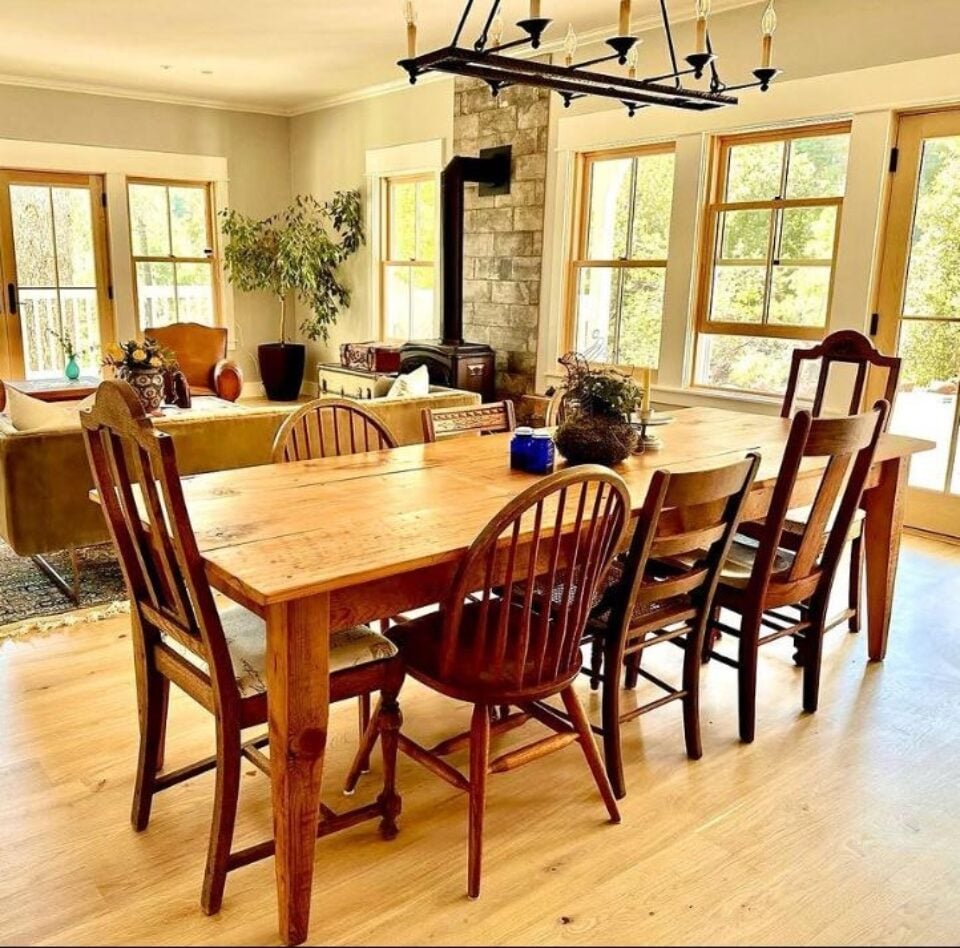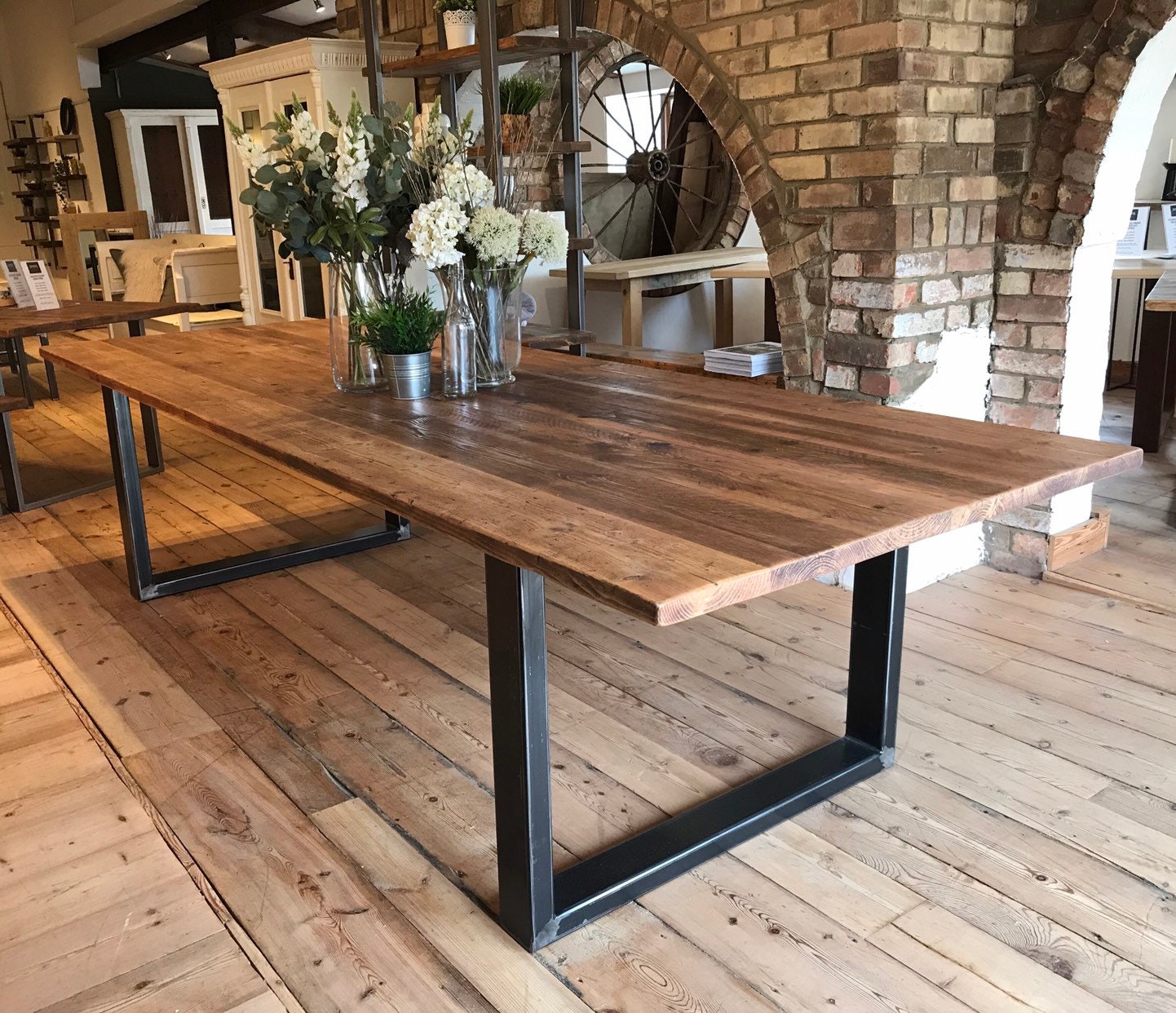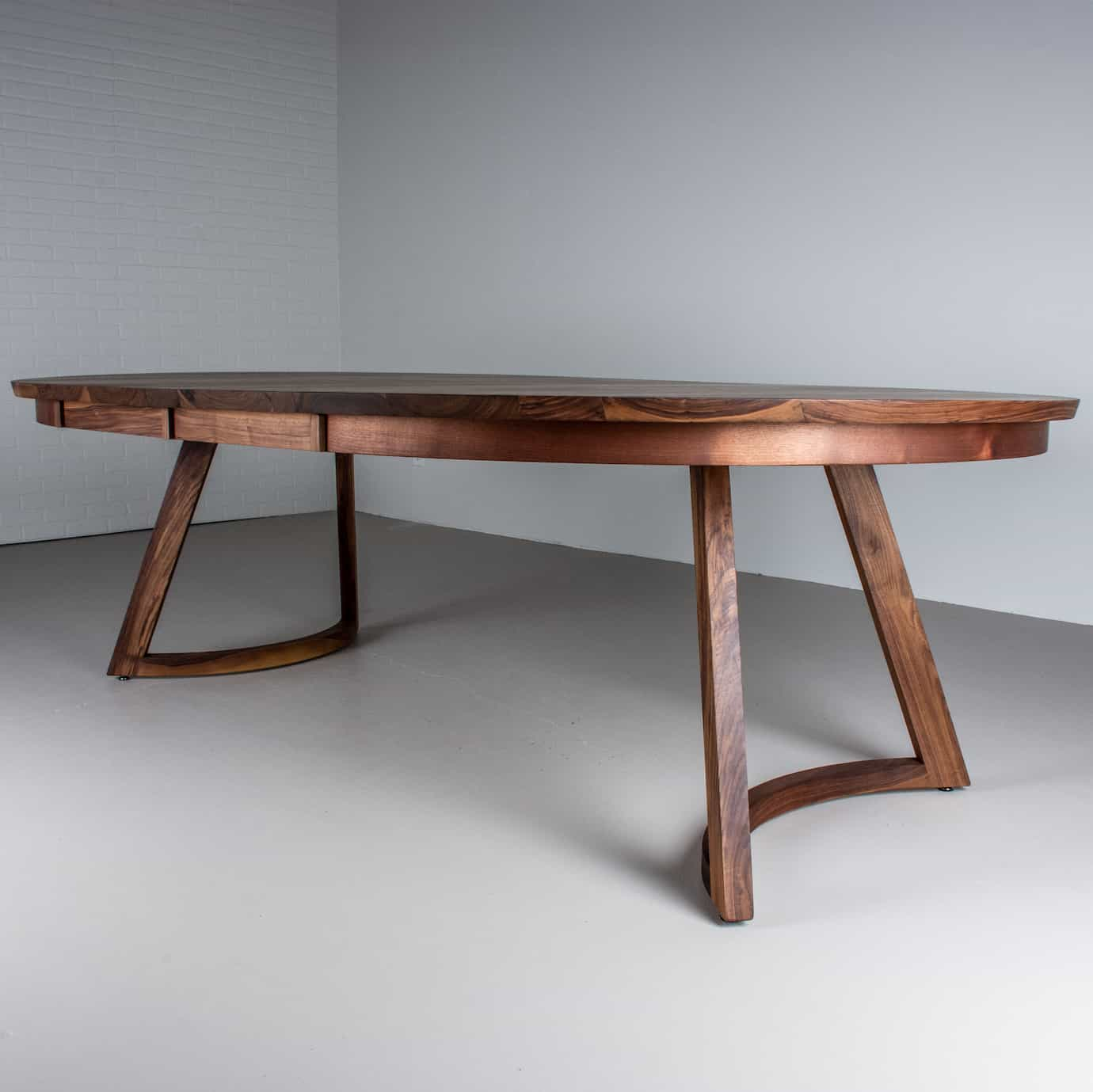Exploring the Various Kinds Of Table Legs Timber for Your Dining Area
The option of dining table legs wood can exceptionally impact both the visual and practical qualities of your dining room. Solid timber options, such as oak and walnut, give a timeless appearance with unrivaled resilience, while crafted wood options offer cutting-edge designs that simulate the richness of natural grains. In addition, the growing fad of reclaimed timber introduces a lasting aspect that allures to environmentally conscious customers. As we check out these numerous options, it comes to be vital to think about not just the aesthetic charm but also the practical effects of each material selection. What factors should assist your decision?
Solid Wood Options

Unlike crafted products, strong timber is less susceptible to warping and damage over time when effectively preserved. Each piece of solid timber is special, showcasing private characteristics that include to the appeal and personality of the eating table.
Furthermore, solid timber can be completed in numerous means, ranging from all-natural oils to tarnished surfaces, allowing homeowners to customize their furniture to match their decor. In recap, choosing strong timber for eating table legs not just guarantees architectural honesty yet also improves the aesthetic allure of the dining area, making it a rewarding investment for any type of home.
Engineered Wood Alternatives

Plywood, created from multiple layers of wood veneer, is especially strong and steady, making it an excellent option for eating table legs. Its layered make-up enables it to stand up to changes in moisture and temperature level far better than conventional strong timber. MDF, on the other hand, uses a smooth surface for painting or veneering, making it possible for developers to accomplish a sleek look while preserving architectural stability.
When picking engineered timber options, it is crucial to consider the designated usage and wanted visual. These materials not only boost the functionality of dining areas however likewise enable for better style adaptability, making sure that standard and modern styles can exist together sympathetically.
Reclaimed Wood Features
Recovered timber uses a distinct mix of sustainability and personality, making it an increasingly preferred choice for dining table legs. Sourced from old barns, factories, and various other structures, reclaimed wood symbolizes a history that new products simply can not replicate. Each piece carries its very own story, marked by distinctive imperfections, knots, and varying grain patterns, which add to a table's one-of-a-kind visual charm.
Along with its visual charm, reclaimed wood is an ecologically friendly choice. By repurposing formerly utilized products, it lowers the demand for new lumber, thus assisting to preserve woodlands and decrease waste. This straightens with an expanding customer preference for lasting techniques in furniture.
Furthermore, reclaimed timber is usually much more durable than freshly harvested timber as a result of its age. The natural drying out process that recovered wood undertakes lead to a denser and stronger product, making it much less at risk to bending and splitting. This improves the long life of eating tables, permitting them to hold up against the rigors of daily use.
Softwood vs. Wood
When choosing eating table legs, comprehending the distinctions between softwood and hardwood is critical for achieving both useful and visual objectives. They commonly display a more rustic look, making them suitable for country-style or informal dining spaces.
On the other hand, hardwoods, sourced from deciduous trees like oak, cherry, and maple, are renowned for their density, stamina, and toughness. The intricate grain patterns and rich colors of hardwoods supply a sophisticated and ageless charm, making them suitable for official dining settings. While hardwoods often tend to be much more costly and larger, their strength against deterioration frequently warrants the financial investment.
Inevitably, the option between softwood and wood for dining table legs should line up with your design vision, use demands, and spending plan, making sure that your eating area reflects your individual design while continuing to be practical in time.

Coatings and Treatments
The aesthetic allure and longevity of table legs can be substantially improved with numerous surfaces and therapies. These procedures not only secure the wood from damage however additionally boost its look, enabling it to enhance varied interior styles.
One usual therapy is tarnishing, which penetrates the timber and enhances discover this info here its all-natural grain while adding color. Discolorations provide an abundant, stylish look, allowing homeowners to match their furnishings with existing style. Alternatively, clear finishes such as polyurethane or varnish develop a safety layer without changing the timber's initial hue, making certain toughness versus deterioration.
Additionally, all-natural oils, like tung or linseed oil, nourish the timber and supply a refined sheen, all while being green. These oils permit the surface area to take a breath, protecting against dampness build-up and possible warping.
For those seeking a rustic appeal, troubled or weather-beaten coatings can be used to develop an aged look, adding character to the item. Inevitably, the selection of coatings and therapies relies on personal preference, wanted looks, and the details timber type, making it important to think about these factors when choosing table legs for your room.
Conclusion
Solid woods, crafted alternatives, and reclaimed options each deal distinct advantages, catering to various choices and needs. Ultimately, the choice of timber kind need to straighten with wanted design, durability, and environmental factors to consider, improving the total eating experience.
The option of dining table legs timber can greatly influence both the visual and useful top qualities of your dining space - Dining Table Legs Wood. Solid timber alternatives, such as oak and walnut, offer a traditional look with unmatched durability, while crafted wood alternatives offer cutting-edge layouts that imitate the richness of all-natural grains. Strong wood offers a classic high quality that visit homepage can raise the visit this page total design of a dining room. Each item of solid wood is unique, showcasing individual features that add to the appeal and personality of the eating table
Furthermore, reclaimed timber is commonly much more resilient than recently collected wood due to its age.